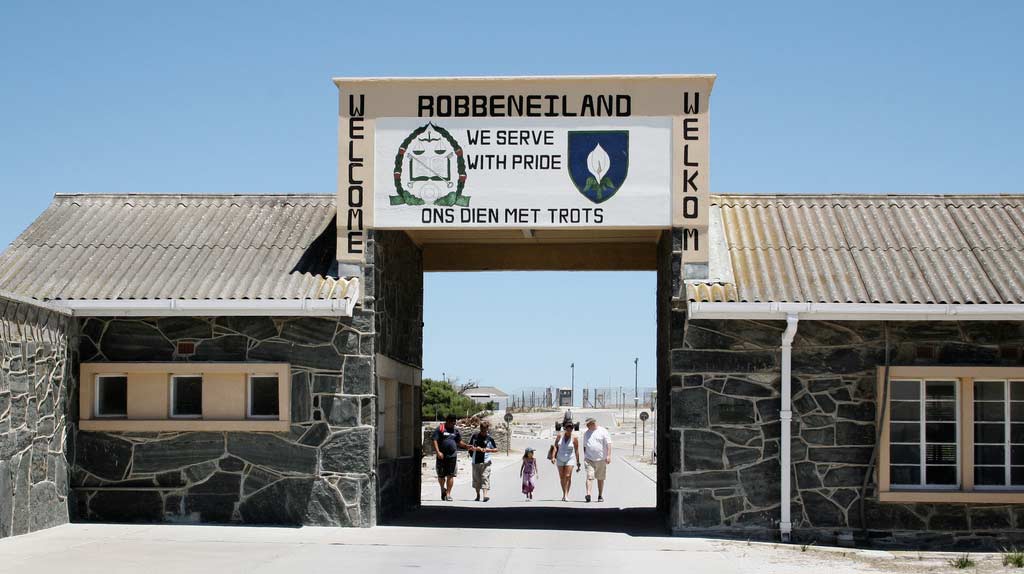Looking for a way in which you can get in touch with the cultural side of Cape Town, and unsure where to start? Here are some key facts around the top eight Museums in Cape Town to help in your planning for an excellent cultural experience. Any of these museums and cultural attractions can be incorporated into a Cape Town History Tour or Cape Town City Tour.

A popular destination, to say the least, Robben Island became famous during the Apartheid era when thousands of freedom fighters from South Africa were arrested and incarcerated there for many years. When visiting the island, you have the option of going on a bus tour through various heritage sites, or you can first take a walking tour through the prison before heading onto the bus. You’ll also be able to see Robert Sobukwe’s home on the island, the Lime Quarry where the prisoners laboured, and the graveyard where some of the prisoners were buried.

Built in the 17th Century, the Castle of Good Hope is known for being the oldest colonial building in South Africa. The castle replaced the original structure, built by Jan van Riebeeck when he arrived in the Cape in 1652. The structure was the focal point for the Dutch colonists taking up residence in the Cape. The Cape at the time was used as a refueling station for ships on their way to and from the east on the ‘Spice Route’. They would stop to replenish their stocks from the locally grown produce before traveling to their next destination.
Some of the activities you can expect during your visit to the Castle include a guided tour of the grounds, exhibitions in the many multipurpose rooms as well as having the opportunity to watch some of the ceremonies like the firing of the signal cannon, which takes place daily.

The District Six Museum was set up as a visual display to show what people of colour living in this area went through in the 1970s when over 60,000 people were forcibly removed during the Apartheid era. The museum offers much more as it takes you on the journey that many lived during a difficult time.
There are a number of exhibitions worth visiting when attending the museum, as well as two District Six encounters. These include specific site visits, house visits, as well as planned interactions within the Museum.

Forming part of the list of the oldest buildings in the Cape, the Slave Lodge is home to a number of cultural experiences in South African history. Used for a number of purposes, the Slave Lodge was the home of Government buildings and the Supreme Court before it became a cultural museum.
Most of the exhibitions and installations on show deal with human rights, equality and the importance of remembering the past. As time has passed, the museum curators have included newer exhibitions that aim to raise awareness of human rights globally. These exhibitions can be found on the lower level of the museum.

A vibrant and bustling area near the heart of Cape Town, Bo-kaap is situated on the slopes of Signal hill overlooking the city. The area is well-known for being home to the Cape Malay people, many of whom are direct descendants of slaves brought to the Cape by the Dutch from the east. The museum showcases the local Islamic culture which has grown in the area.
Through the many colourful houses and cobbled streets, the area itself is definitely worth a visit. The museum is currently being changed to a social museum where it can tell the story of the many people who lived in the area during the Apartheid era.

From walking and cultural tours to have the opportunity to experience some cultural dining, you’re bound to have a unique experience when you visit the Chavonne Battery. The museum itself focuses on telling the story of South African history through photography and displays, including a photo exhibition of the late Nelson Mandela.

Providing a unique experience for its visitors, the Cape Town Holocaust Centre honors the many people, Jewish and otherwise, who were killed during World War II and those who fell victim to Nazism. The team working at the centre spent a large amount of time putting together exhibitions that will teach people about the prejudice, racism, and xenophobia many experienced during the holocaust itself.

At the Jewish Museum, you can expect to be taken through a variety of interactive displays and audio-visual presentations through the Jewish history of the country. From a community that formed a fundamental part in the formation of South Africa, the museum is also home to a collection of Netsuke. This is miniature Japanese art.
These are just eight of the historical sites you should add to your list when planning your cultural experience around the Cape. Each of them offers a truly unique experience that will make you appreciate the hardships many experienced in South Africa and the rest of the world.


